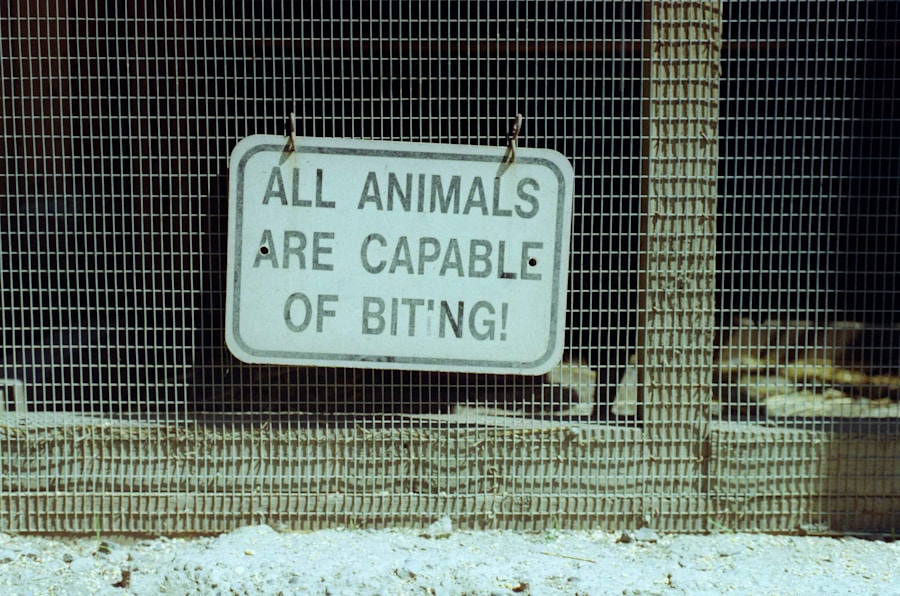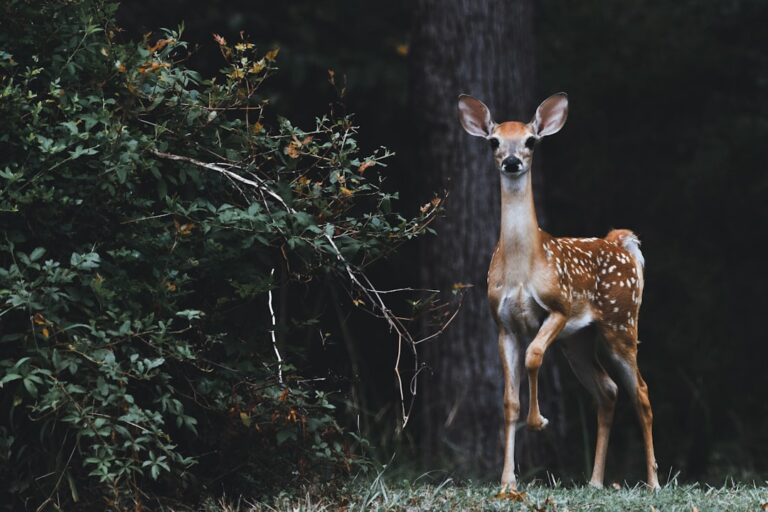Animal behavior is a fascinating field of study that encompasses the myriad ways in which animals interact with their environment, other organisms, and themselves. This discipline examines the biological, ecological, and evolutionary factors that shape behavior, providing insights into the survival strategies of various species. From the intricate courtship rituals of birds to the complex social structures of primates, animal behavior reveals the underlying mechanisms that drive life on Earth.
Understanding these behaviors not only enriches our knowledge of the natural world but also informs conservation efforts and enhances our relationship with wildlife. The study of animal behavior, or ethology, has evolved significantly since its inception. Early ethologists like Konrad Lorenz and Nikolaas Tinbergen laid the groundwork by observing animals in their natural habitats and identifying instinctual behaviors.
Today, researchers employ a multidisciplinary approach that integrates genetics, ecology, psychology, and neuroscience to unravel the complexities of behavior. This comprehensive perspective allows scientists to explore how behaviors are developed, maintained, and modified over time, shedding light on the adaptive significance of various actions in the context of survival and reproduction.
Key Takeaways
- Animal behavior is the study of how animals interact with their environment and each other.
- Genetics play a significant role in shaping animal behavior, influencing traits such as aggression and sociability.
- Environmental factors such as food availability and climate can greatly impact animal behavior.
- Communication and social behavior are crucial for animals to interact and cooperate within their social groups.
- Foraging and feeding behavior are essential for animals to obtain the necessary nutrients for survival.
The Role of Genetics in Animal Behavior
Genetics plays a pivotal role in shaping animal behavior, influencing everything from instinctual responses to learned behaviors. The heritability of certain traits can be traced back to specific genes, which can predispose individuals to exhibit particular behaviors. For instance, studies on the fruit fly Drosophila melanogaster have demonstrated that mutations in certain genes can lead to altered mating behaviors, showcasing a direct link between genetic makeup and behavioral expression.
Similarly, research on wolves has revealed that genetic factors contribute to pack dynamics and social hierarchies, affecting how individuals interact within their groups. Moreover, the interplay between genetics and environment is crucial in understanding behavioral outcomes. While certain behaviors may have a genetic basis, environmental factors can modulate their expression.
For example, the famous case of the “nature versus nurture” debate is exemplified in studies of domesticated animals. Dogs, descended from wolves, exhibit a range of behaviors influenced by selective breeding for specific traits. However, their upbringing and socialization also play significant roles in shaping their behavior.
This intricate relationship between genetics and environment underscores the complexity of animal behavior and highlights the need for a holistic approach in studying it.
Environmental Influences on Animal Behavior

The environment is a powerful determinant of animal behavior, influencing how species adapt to their surroundings and interact with one another. Factors such as habitat availability, climate conditions, and resource distribution can significantly impact behavioral patterns. For instance, animals living in resource-scarce environments may develop foraging strategies that maximize energy efficiency.
The foraging behavior of desert-dwelling rodents illustrates this concept; these animals have adapted to their arid surroundings by becoming nocturnal to avoid the heat of the day while employing efficient methods to locate food. Additionally, environmental changes can lead to behavioral adaptations over time. The phenomenon of phenotypic plasticity allows animals to adjust their behaviors in response to varying environmental conditions.
A notable example is seen in certain fish species that alter their reproductive strategies based on population density and resource availability. In crowded conditions, some fish may adopt alternative mating tactics to increase their chances of reproductive success. Such flexibility in behavior highlights the dynamic relationship between organisms and their environments, emphasizing the importance of adaptability in the face of changing ecological circumstances.
Communication and Social Behavior in Animals
| Animal | Communication Method | Social Behavior |
|---|---|---|
| Honeybees | Waggle dance, pheromones | Cooperative foraging, hive construction |
| Bonobos | Facial expressions, vocalizations | Peaceful conflict resolution, empathy |
| Killer whales | Echolocation, vocalizations | Matrilineal social structure, cooperative hunting |
| Elephants | Infrasound, body language | Complex social bonds, mourning rituals |
Communication is a fundamental aspect of animal behavior that facilitates interactions among individuals within a species. Animals employ a diverse array of signals—visual displays, vocalizations, chemical cues, and tactile interactions—to convey information about territory, mating readiness, or danger. For example, the elaborate courtship dances of birds-of-paradise serve not only to attract mates but also to establish dominance among competing males.
These displays are often accompanied by vibrant plumage and intricate movements that signal genetic fitness to potential partners. Social behavior is intricately linked to communication, as many species rely on social structures for survival and reproduction. In primate societies, complex social hierarchies dictate access to resources and mating opportunities.
The study of chimpanzees has revealed that they engage in cooperative behaviors such as grooming and alliance formation, which strengthen social bonds within groups. These interactions are crucial for maintaining group cohesion and enhancing individual fitness. Furthermore, communication plays a vital role in coordinating group activities such as hunting or foraging, demonstrating how social dynamics are deeply intertwined with behavioral strategies.
Foraging and Feeding Behavior
Foraging behavior is essential for an animal’s survival, as it directly impacts its ability to acquire food resources necessary for energy and growth. Different species have evolved specialized foraging strategies tailored to their ecological niches. For instance, raptors like hawks utilize keen eyesight and aerial hunting techniques to capture prey from above, while herbivores such as deer have developed grazing patterns that optimize their intake of vegetation based on seasonal availability.
The efficiency of foraging strategies can also be influenced by social learning and cultural transmission within species. In some cases, young animals learn foraging techniques by observing older individuals. This phenomenon is particularly evident in orca pods where younger members learn hunting strategies from experienced matriarchs.
Such learned behaviors can enhance foraging success and contribute to the overall fitness of the group. Additionally, environmental factors such as competition with other species or changes in food availability can drive shifts in foraging behavior over time, illustrating the dynamic nature of this critical aspect of animal life.
Reproductive Behavior in Animals

Reproductive behavior encompasses a wide range of activities related to mating and raising offspring, playing a crucial role in the continuation of species. Courtship rituals are often elaborate and serve multiple purposes: attracting mates, establishing territory, and signaling genetic fitness. In many bird species, males engage in intricate displays that may include singing, dancing, or showcasing vibrant plumage to entice females.
These behaviors not only demonstrate the male’s health but also provide females with information about potential genetic quality. Parental investment is another critical component of reproductive behavior that varies widely across species. In some cases, such as with many fish species that exhibit external fertilization, parental care is minimal or nonexistent after spawning.
Conversely, mammals often display significant parental investment; for example, elephants exhibit strong maternal bonds and cooperative care among females within a herd. This investment can enhance offspring survival rates by providing protection and resources during critical developmental stages. The diversity of reproductive strategies across the animal kingdom reflects the complex interplay between evolutionary pressures and ecological contexts.
Migration and Navigation in the Animal Kingdom
Migration is a remarkable behavioral phenomenon observed in numerous animal species as they travel long distances in search of food, breeding grounds, or more favorable environmental conditions. This behavior is often driven by seasonal changes and resource availability. For instance, millions of wildebeest undertake an annual migration across the Serengeti ecosystem in search of fresh grazing pastures during the dry season.
This journey not only showcases their resilience but also highlights the interconnectedness of ecosystems as they influence predator-prey dynamics along their route. The navigation abilities exhibited by migratory animals are equally impressive and involve a combination of innate mechanisms and learned experiences. Many birds utilize celestial cues such as the position of the sun or stars for orientation during migration.
Some species are known to possess an innate magnetic sense that allows them to detect Earth’s magnetic field for navigation purposes. Research on monarch butterflies has revealed that these insects can navigate thousands of miles using a combination of environmental cues and an internal circadian clock. Such remarkable navigational skills underscore the evolutionary adaptations that enable animals to undertake extensive migrations successfully.
Human Impact on Animal Behavior
Human activities have profoundly influenced animal behavior across the globe, often leading to significant changes in how species interact with their environments and each other. Habitat destruction due to urbanization, agriculture, and deforestation has forced many animals to adapt their behaviors in response to altered landscapes. For example, urban-dwelling wildlife such as raccoons and coyotes have developed new foraging strategies that capitalize on human refuse as a food source.
Additionally, climate change poses unprecedented challenges for many species by altering migration patterns, breeding seasons, and food availability. As temperatures rise and habitats shift, animals may be forced to modify their behaviors or face extinction. The case of polar bears illustrates this issue; as sea ice diminishes due to warming temperatures, these apex predators must travel greater distances to find seals—one of their primary food sources—leading to increased energy expenditure and decreased reproductive success.
Furthermore, human-induced changes can disrupt social structures within animal populations. Overfishing has led to declines in certain fish species, affecting predator-prey dynamics within marine ecosystems. Similarly, poaching and illegal wildlife trade threaten not only individual species but also entire ecosystems by destabilizing established social hierarchies among animals like elephants or rhinoceroses.
In summary, animal behavior is a multifaceted field shaped by genetics, environmental influences, communication strategies, feeding habits, reproductive practices, migratory patterns, and human impacts. Each aspect contributes to our understanding of how animals navigate their worlds and adapt to ever-changing circumstances.












